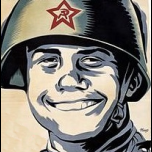Operation Mars
Лучшие авторы в этой теме
-

2
Популярные дни
Лучшие авторы в этой теме
-

Northern Neighbour 2 сообщений
Популярные дни
-
Сейчас на странице 0 пользователей
- Нет пользователей, просматривающих эту страницу
Рекомендованные сообщения
Присоединиться к обсуждению
Вы можете оставить комментарий уже сейчас, а зарегистрироваться позже! Если у вас уже есть аккаунт, войдите, чтобы оставить сообщение через него.